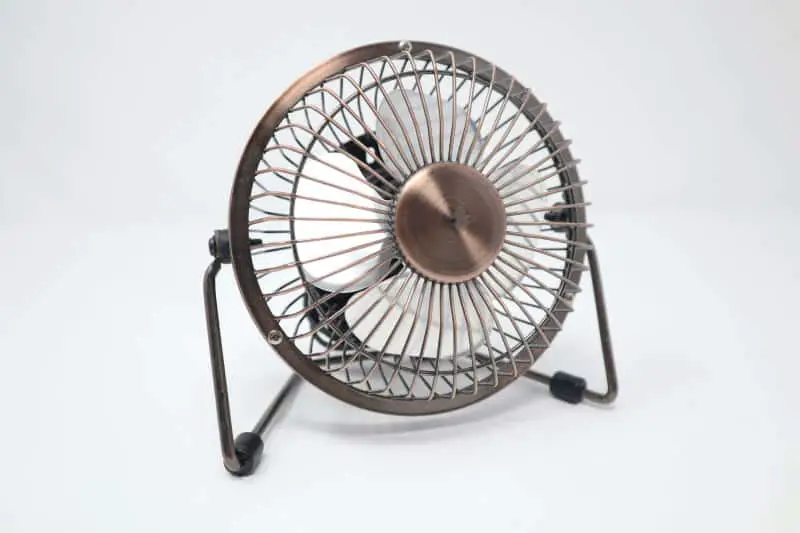In almost every home, there is a fan for producing currents of air. Whether you’re using a ceiling fan or handheld electronic fan, they are all effective in cooling your body. Just like other electronic appliances, you will be surprised that fans are among the EMF emitting devices in your home and office.
Let’s have a look at how fans operate and how they give off radiation.
Do Fans Give Off EMF Radiation?
Yes, electrical fans emit high levels of EMF radiation. They emit extremely low-frequency magnetic fields that are dangerous to your health.
The levels of exposure depend on the type of fan you’re using. Hand-held electric fans do have higher exposure levels than battery-powered fans.

On average, fans can emit electromagnetic radiation of up to 647.7 milligauss (mG). The lowest amount of radiation emitted by the fans is about 281 mG while the highest values are about 1020 mG.
Although there are various regulations put in place by the federal agencies and Environmental Protection Agency (EPA), not all products comply with them. Some of these electronic fans emit higher levels than the recommended safety standards levels of 833 mG, thus exposing you to high dangers from electromagnetic radiation.
However, when placed some distance from you, they will have reduced radiation exposure impacts to you. Therefore, maintaining a distance of about 25 centimeters away from the fans can dramatically reduce exposure from the EMF waves.
Continuous accumulation of these harmful waves on a daily basis gives rise to potential health risks.
How Fans Emit Electromagnetic Radiation
Just like other electrical devices, fans do emit electromagnetic radiation when operating. Fans that use electricity to run have a motor that converts the electrical energy from the power sockets into mechanical energy.

When an electric current flows into the motor, it is distributed into several wires around the metal base of the fan. As the current-carrying conductor flows through the wire, it generates a magnetic field which further generates a force to enable the blades to rotate.
The exerted force enables the blades to rotate in a clockwise direction. The mechanical energy enables the motor coils to spin and this causes the blades attached to the motor to spin as well. The fan has a motor that converts the electrical energy.
Magnetic fields generated when the electrical current flows into the motor creates potential risks to your health. As the motor gains enough force to keep the motor coils spinning, it emits more magnetic field radiation.
The frequency of your electrical motor determines your rate of exposure to electromagnetic radiation.
Additionally, different types of fans generate different levels of EMF radiation. Therefore, the level of exposure from one individual to the other is different. There are also other factors within your surroundings that can increase your exposure.
Conclusion
There are different types of fans on the market that emit electromagnetic radiation. The amount of radiation emitted depends on the electric motor in each of the fans.
If you want to reduce your exposure, you should go for the fans that have low EMF emissions. Alternatively, you can go for battery-powered fans that emit little to no EMFs.



